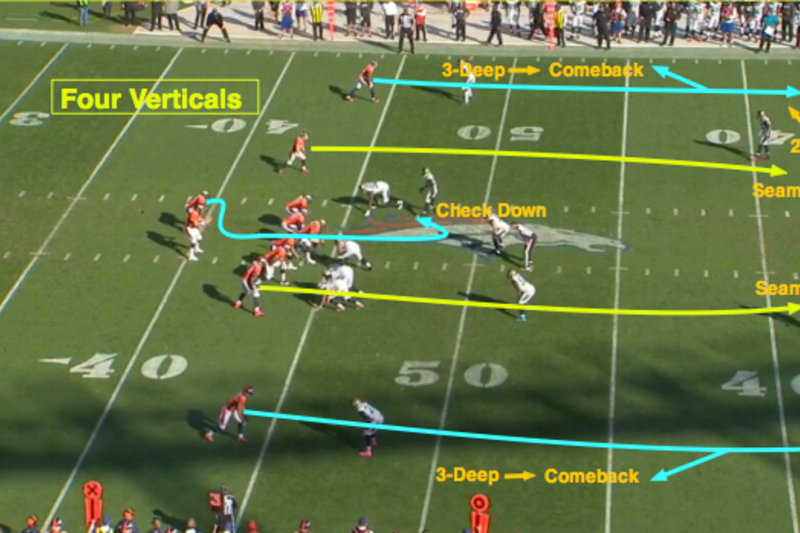Gassers are a type of conditioning drill in football. They test speed and endurance.
In football, keeping players in top physical shape is crucial. Gassers help achieve this by pushing athletes to their limits. These intense drills require running back and forth across the field within a set time. Coaches use gassers to improve stamina, speed, and mental toughness.
This practice prepares players for the physical demands of a game. Understanding gassers can give you insight into the rigorous training football players endure. Let’s dive deeper into what makes gassers an essential part of football training.
Introduction To Gassers
In football, conditioning and endurance drills are crucial. One of the most intense drills is known as “gassers.” Coaches use gassers to push players to their physical limits. This drill is common in football training camps and practices. But what exactly are gassers? Let’s dive into the details.
Origin Of The Drill
The term “gassers” likely comes from the exhaustion players feel after the drill. It’s like running until you’re out of gas. Coaches have used this drill for decades. It helps players build stamina and mental toughness. The drill is a staple in many football programs.
Purpose And Benefits
Gassers improve both speed and endurance. Players run sprints across the width of the field. This high-intensity workout mimics the demands of a football game. It helps players maintain peak performance during crucial moments.
Another benefit is mental toughness. Gassers push players beyond their comfort zones. They learn to keep going even when they’re tired. This mental strength is vital on the football field.
Finally, gassers build team unity. Players encourage each other to finish strong. This support fosters a sense of camaraderie and teamwork. These elements are essential for a successful football team.
How Gassers Work
Football conditioning drills are crucial for players’ performance and endurance. One such drill, known as Gassers, is widely used by coaches. This drill tests and improves players’ speed and stamina. Let’s dive into how Gassers work.
Basic Structure
Gassers are straightforward yet effective. Players run from one sideline to the other and back. This counts as one repetition. Coaches often use Gassers to push players to their limits. It helps build both physical and mental toughness.
Distance And Duration
The standard distance for a Gasser is the width of a football field. This is approximately 53.3 yards. Players usually perform multiple repetitions in one session. The number of reps depends on the training goal.
| Type | Distance | Repetitions |
|---|---|---|
| Single Gasser | 53.3 yards (one way) | 4-8 reps |
| Full Gasser | 106.6 yards (round trip) | 4-6 reps |
Each Gasser typically lasts between 20 to 30 seconds. Players rest for 30 seconds to a minute between repetitions. The rest period allows them to recover slightly before the next run.
- Shorter rest periods increase stamina.
- Longer rest periods focus on speed.
Coaches adjust the distance and duration based on the team’s needs. This makes Gassers a versatile tool in football training.
Types Of Gassers
Gassers are intense conditioning drills used in football to improve endurance. There are different types of gassers. Each has unique elements that target various aspects of fitness. This section will explore the Traditional Gassers and Modified Versions.
Traditional Gassers
Traditional gassers are the most common form. Players run from sideline to sideline. This drill is typically done in four segments:
- Sprint from one sideline to the other.
- Touch the line with your hand.
- Sprint back to the starting sideline.
- Repeat this sequence twice more.
It is essential to touch the line each time. This ensures the full distance is covered. Completing traditional gassers can be very demanding. It builds both speed and stamina.
Modified Versions
Modified versions of gassers introduce variety. They can target specific needs or increase intensity:
- Half Gassers: Run from one sideline to the hash mark and back.
- Quarter Gassers: Run to the near hash mark and return.
- Shuttle Gassers: Incorporate quick changes in direction.
Each modified version serves a unique purpose. Half gassers focus on short bursts of speed. Quarter gassers are even quicker, perfect for agility. Shuttle gassers enhance quick directional changes.
Choosing the right type depends on the team’s goals. Coaches often mix and match. This keeps training dynamic and effective.

Credit: www.youtube.com
Implementing Gassers In Training
Implementing gassers in training can be a valuable addition to football workouts. Gassers are intense sprints that help improve speed, endurance, and mental toughness. They involve running from one sideline to the other, and back, usually within a set time. This drill can push players to their limits, making them more resilient on the field.
Warm-up And Cool-down
Before starting gassers, a proper warm-up is essential. Warming up prepares the body for intense activity. It reduces the risk of injury and improves performance. Start with light jogging for five minutes. Follow with dynamic stretches like leg swings and high knees. This increases blood flow to muscles.
After completing gassers, cooling down is just as important. It helps the body recover and prevents stiffness. Cool down with light jogging and static stretches. Focus on hamstrings, quadriceps, and calves. Hold each stretch for at least 30 seconds. This helps relax muscles and improve flexibility.
Frequency And Timing
Incorporate gassers into training sessions carefully. Overdoing them can lead to fatigue and injury. Aim to do gassers twice a week. This allows players to recover and gain the benefits of the exercise. Choose the timing wisely. Gassers can be done at the end of practice when players are already fatigued. This simulates game conditions and builds mental toughness.
Alternatively, they can be done at the beginning of a session. This helps improve speed and endurance early on. Adjust the frequency and timing based on the team’s needs and goals.
Physical And Mental Benefits
Gassers in football are intense sprint workouts. They offer significant physical and mental benefits. These drills push players to their limits. They improve endurance and mental toughness. Below, we explore these benefits in detail.
Endurance Improvement
Gassers greatly enhance a player’s endurance. They involve running short distances at full speed. This mimics game conditions. Players get used to fast, repeated sprints. Over time, their stamina increases. This helps them perform better during long matches. They recover faster between plays. This gives them an edge over their opponents.
Mental Toughness
Gassers also build mental toughness. The drills are challenging and exhausting. Players must push through fatigue. They learn to ignore discomfort. This mental strength is crucial during games. It helps them stay focused under pressure. They can handle tough situations better. This mindset is key for success in football.

Credit: wingt-coach.com
Common Mistakes To Avoid
Gassers are a common conditioning drill in football. They help players build stamina and speed. Yet, many athletes make mistakes during these drills. These errors can lead to injuries or reduced performance. Let’s explore the common mistakes to avoid.
Overtraining
Players often push themselves too hard during gassers. Overtraining can cause fatigue and injuries. It is vital to listen to your body. Rest is as crucial as the workout itself. Balance your training with proper recovery periods. This helps in maintaining long-term performance.
Improper Technique
Using the wrong technique during gassers can be harmful. Running with poor form strains muscles and joints. Focus on your posture and stride. Keep your head up and maintain a steady breathing pattern. Proper technique ensures better results and fewer injuries.
Coaching Tips For Gassers
Gassers are intense conditioning drills in football. They help improve speed and endurance. Coaching these drills effectively is crucial. Here are some tips to make your coaching sessions more productive and engaging.
Motivational Strategies
Motivating players during gassers can be challenging. Use these strategies to keep the energy high:
- Set Clear Goals: Define what you want to achieve with each session.
- Positive Reinforcement: Praise players for their efforts and improvements.
- Team Spirit: Encourage players to cheer for each other.
Consider using a reward system. Small rewards can boost morale. For example, offer extra break time for the best-performing group.
Monitoring Progress
Tracking progress helps in understanding improvements. Here are ways to do it:
- Record Times: Keep a log of each player’s performance.
- Weekly Reviews: Review progress with the team every week.
- Visual Charts: Use charts to display progress visibly.
Use a simple table to record and compare times:
| Player Name | Week 1 | Week 2 | Week 3 |
|---|---|---|---|
| John | 30 sec | 28 sec | 27 sec |
| Mike | 32 sec | 30 sec | 29 sec |
Seeing progress can be very motivating for players. Celebrate small victories along the way.

Credit: www.youtube.com
Case Studies And Success Stories
Gassers are a well-known conditioning drill in football. They build endurance and mental toughness. This section will explore real-world examples of how professional teams and college programs have successfully used gassers.
Professional Teams
Professional football teams use gassers to improve their players’ stamina. The New England Patriots are a prime example. Their rigorous training regimen includes gassers. This has helped them stay competitive over the years.
The Seattle Seahawks also use gassers. Their training staff believes this drill helps players maintain high energy levels during games. They credit gassers for their players’ ability to perform well in the fourth quarter.
| Team | Benefit of Gassers |
|---|---|
| New England Patriots | Improved Endurance |
| Seattle Seahawks | High Energy Levels |
College Programs
College football programs also see the value in gassers. The Alabama Crimson Tide is a leading example. Their coach, Nick Saban, incorporates gassers into every practice. This has helped the team win multiple national championships.
The Ohio State Buckeyes have a similar approach. They use gassers to prepare for their high-tempo offensive plays. This has given them an edge in many tight games.
- Alabama Crimson Tide: Championships won due to superior conditioning
- Ohio State Buckeyes: Preparedness for high-tempo plays
Frequently Asked Questions
What Are Gassers In Football?
Gassers are sprint drills used to improve players’ endurance and speed. They involve running across the field multiple times.
Why Do Football Players Run Gassers?
Football players run gassers to increase cardiovascular fitness and build stamina. It’s essential for maintaining high performance during games.
How Do You Perform A Gasser Drill?
To perform a gasser drill, sprint from one sideline to the other and back. Repeat this multiple times.
How Often Should Gassers Be Done?
Gassers should be done 2-3 times per week. This frequency ensures improved endurance without overtraining.
Conclusion
Gassers play a vital role in football training. They build stamina and speed. Players run from sideline to sideline, pushing their limits. Coaches use gassers to test endurance and mental toughness. This drill prepares athletes for intense game situations. Understanding gassers helps appreciate a player’s hard work and dedication.
Next time you watch a game, remember the effort behind each play. Gassers are more than just sprints; they are a key training tool. They shape strong, resilient football players.





